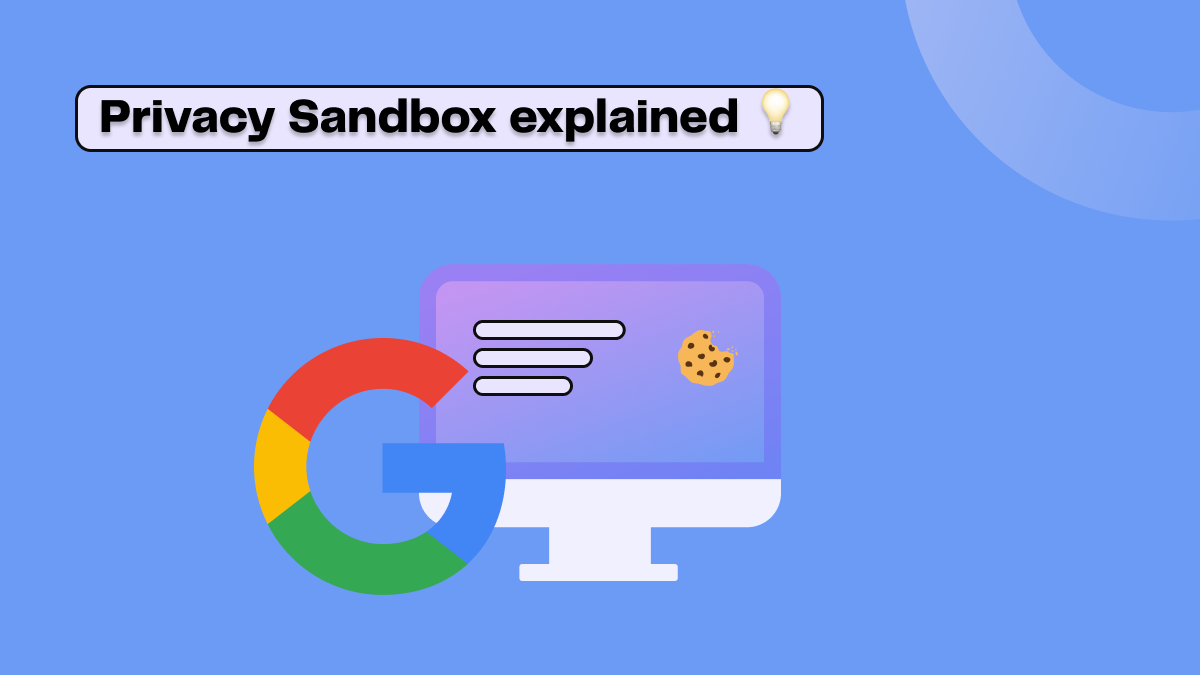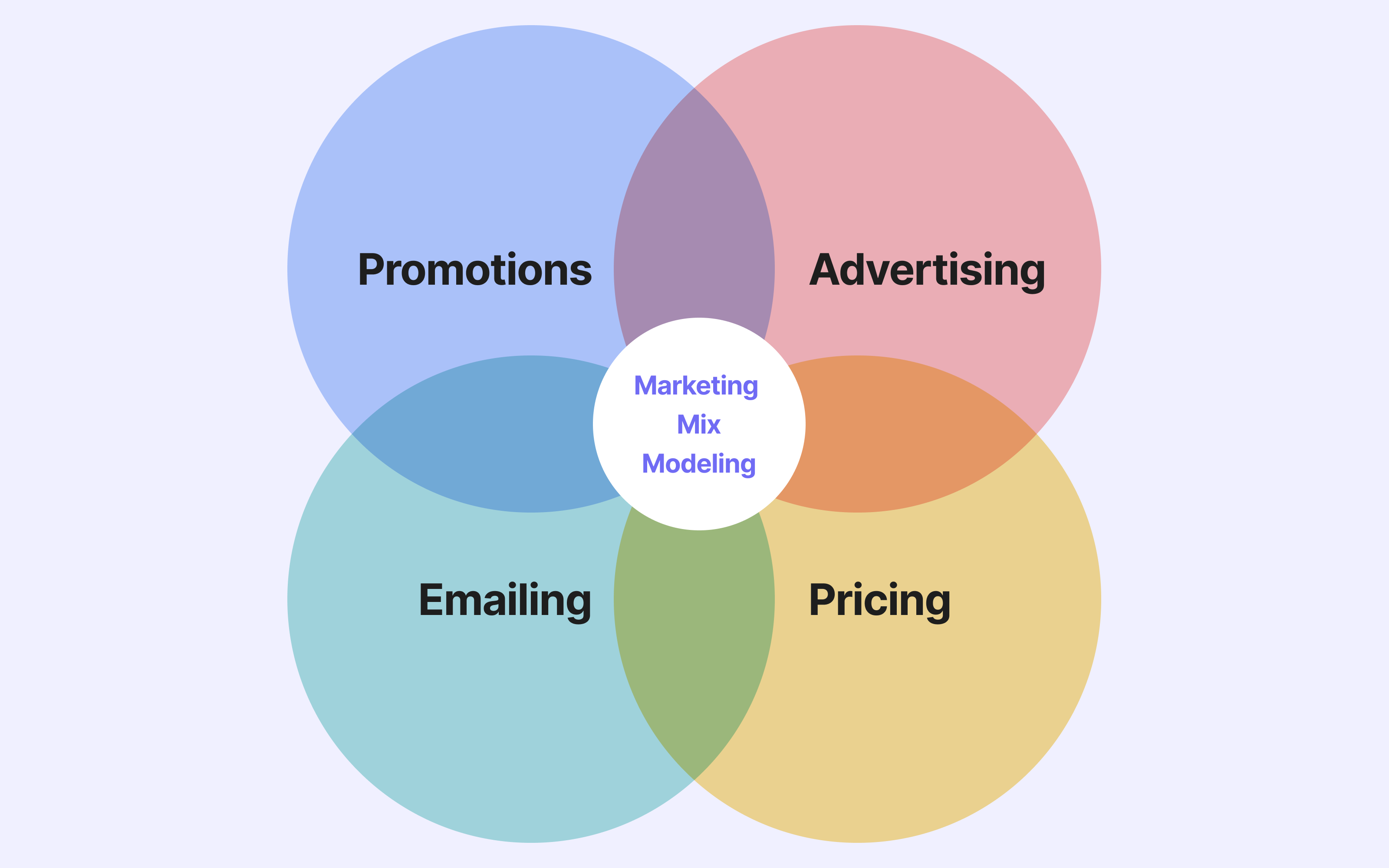
How to improve Ads ROI with Conversion APIs
5min • Last updated on Jan 13, 2025

Alexandra Augusti
Chief of Staff
To successfully navigate into a cookieless world, a new era of advertising is emerging, using a server-side first integration strategy.
Learn why traditional tracking and advertising methods are reaching their limits and what server-side integration is. Discover new solutions to limit the impact of restrictions on third-party cookies and understand how you can leverage DinMo to push your first-party data to all your social platforms to boost your marketing performance.
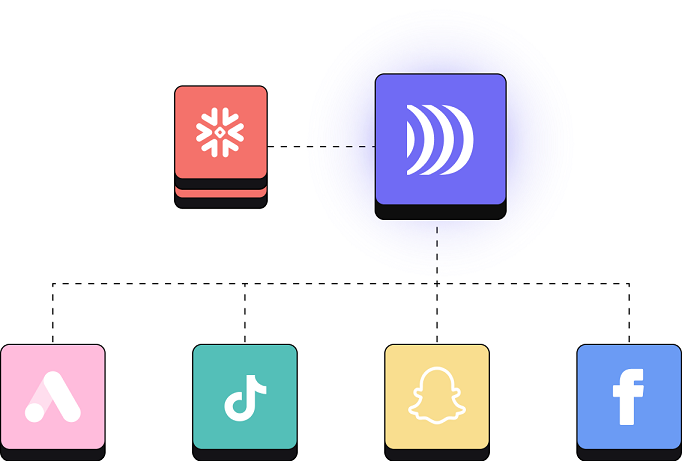
Importance of conversion for marketers
A conversion is observed when a user achieves a specific objective or realizes an action that is considered as interesting for a given company. As conversions are possible both online and offline, adopting cross-channel overviews is essential to monitor them correctly.
Conversion data powers ad reporting, allowing one to understand the reach and the performances of all marketing actions undertaken by an enterprise. Analyzing these performances makes it easier to identify the most performing campaigns to focus efforts on them and abandon the less relevant ones.
Yet, conversion data should not be only reduced to campaign measurement, as it appears to be key to better understanding customer journeys and optimizing marketing campaigns. Indeed, this highly qualitative data is key to feeding machine learning algorithms used in audience strategies, such as lookalike or (re)targeting. Moreover, bidding strategies can intelligently be adapted according to conversion events to obtain better results. Finally, the use of conversion data allows you to considerably improve your cost per action.
Traditional web tracking
How tracking pixels work
Conversion tracking has been traditionally based on web pixels – which are code scripts placed on the website of a company – since their invention by Facebook in 2012. These scripts are run on the user’s browser, meaning that web pixels are “client-side” solutions.
The functioning of third-party cookies and pixels is simple: a web pixel collects information when a user interacts with the website (=event) in a way that is interesting for an enterprise (=conversion). The information is then directly sent to the business managers of the social networks.
Web pixels can track users across their different devices, as far as they use the same identifiers.
More concretely, here is how a web pixel works:
A user makes a conversion on the company’s website
The backend perceives this action as a request and will look for the right information to send to the user. Codes are run on the user’s browser, the solution being client-side.
For instance, if the request is a click on a product, a redirection to the Product Details Page would be the adapted responseTags can only be fired if the user does not use a browser that blocks third-party cookies or ad blockers and if has given prior consent. In that case, the event will be sent to the social platform and the conversion data will be available on the platform.
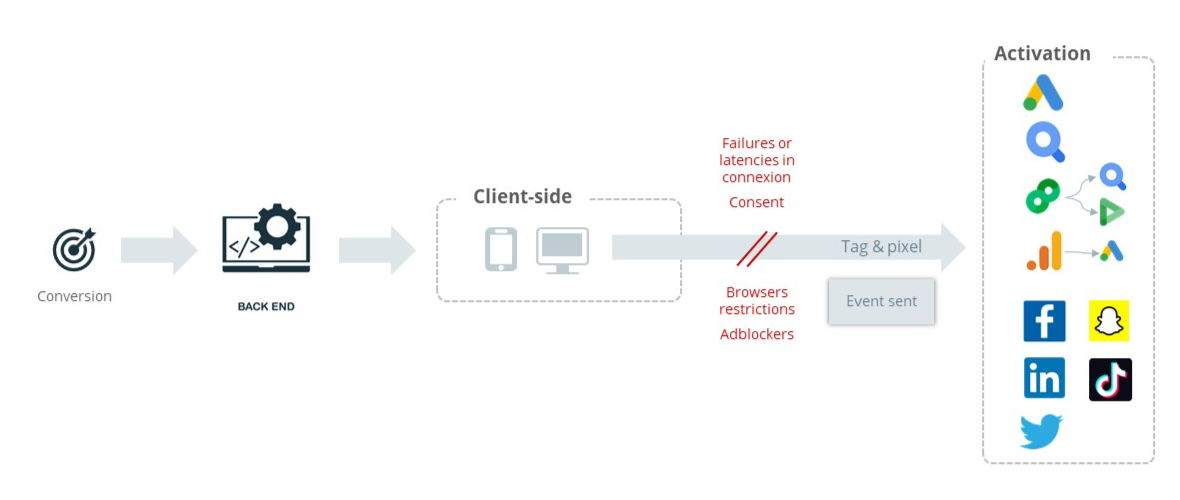
What does client-side mean?
The data is directly sent to the third-party platforms owning the Pixels, so it is never stored elsewhere. This data cannot be reviewed and/or edited by the advertiser before being sent, limiting control over it.
Limitation of website pixels
These web pixels are based on the use of third-party cookies. Yet, these cookies are threatened by both technical and regulatory evolutions.
In concrete terms, the sending of this conversion data depends on:
The user consent: depending on the optimization of the banners, between -20% and -35% of the information is sent to the platforms
Ad Blockers: JavaScript codes cannot be run if the user uses an ad blocker, meaning that the web pixels are not functional. However, at least 25% of the users declare using one, resulting in a 25% data loss.
Browser restrictions: Safari and Firefox have already banned third-party cookies. Google also announced the end of third-party cookies for Chrome in early 2025. Yet, the algorithms of the media platforms are based on these cookies and are then lacking data.
Today, around 30% of the Internet traffic comes from Safari or Firefox. With restrictions on Chrome, the loss of information could rise to over 80% by 2025.Connection errors: failures or latencies in connecting to the platform can increase data loss.
Finally, the volume of data sent to the web pixels is less and less important, representing ~ 40% of the initial information. This has a deep impact on campaign optimization.
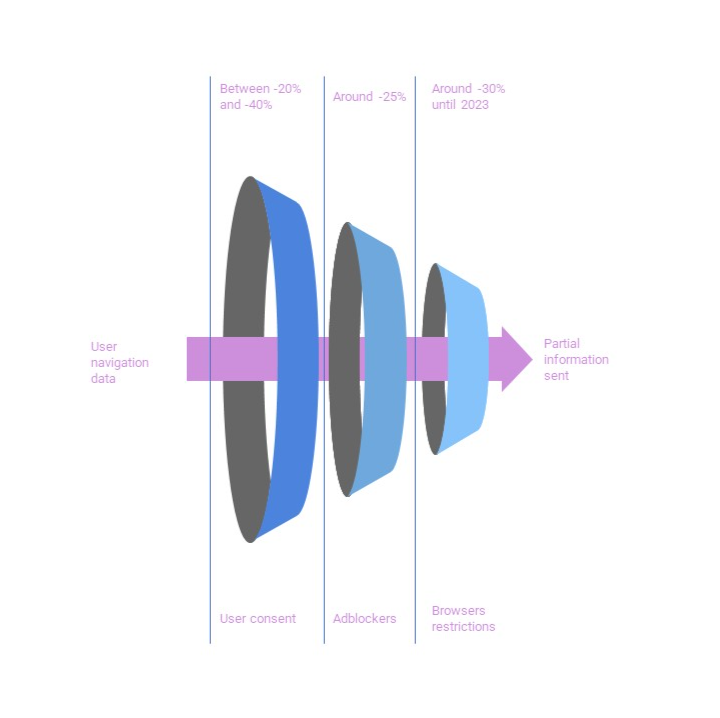
Drop in data sent because of user consent, ad blockers and browsers restrictions
Although the loss of information related to the user consent will remain unchanged, it is possible to use workarounds to ad blockers and browser restrictions to avoid losing more information. Indeed, to maintain data volume and quality, using server-side solutions and collecting first party data show up as a key strategies as they are not unencumbered by ad blockers or browser restrictions.
Moreover, using server-side solutions gives you more control over your data, allowing you to review and edit it before sending it. Both offline and online conversions can be sent, anywhere within the customer journey offering you more flexibility than with a simple web pixel.
Sending additional data allows you to obtain a 360° view of your consumers, especially by integrating data at the bottom of the conversion funnel.
Switching to a headless CDP strategy
To tackle these new challenges, the major social networks are developing their own “Conversions APIs”, as a more powerful and reliable way to share events. Indeed, Facebook, Google, Snapchat, and Tiktok are adopting server-side solutions to collect data that web pixels and third-party cookies can no longer capture.
💡Many companies have considered using a Customer Data Platform to send their data to their platforms. However, traditional CDPs come with a number of drawbacks, explaining the desire to implement these APIs on their own.
If you want to learn more on that subject, do not hesitate to check our guides on:
Meta CAPI: the API developed by Meta to send online and offline event data to its suite of applications (Facebook, Instagram, Messenger, Whatsapp).
Google Ads Enhanced Conversions: a suite of solutions proposed by Google, enabling you to send conversions (both online and offline), adjust the value of certain conversions (e.g. from value-based to margin-based), or simply cancel conversions (particularly for order returns).
Snapchat Ads CAPI: the API developed by Snapchat to send online and offline event data to retrace a complete customer journey
TikTok Events API: the API developed by TikTok to send event data (both online and offline) for a complete overview of each consumer.
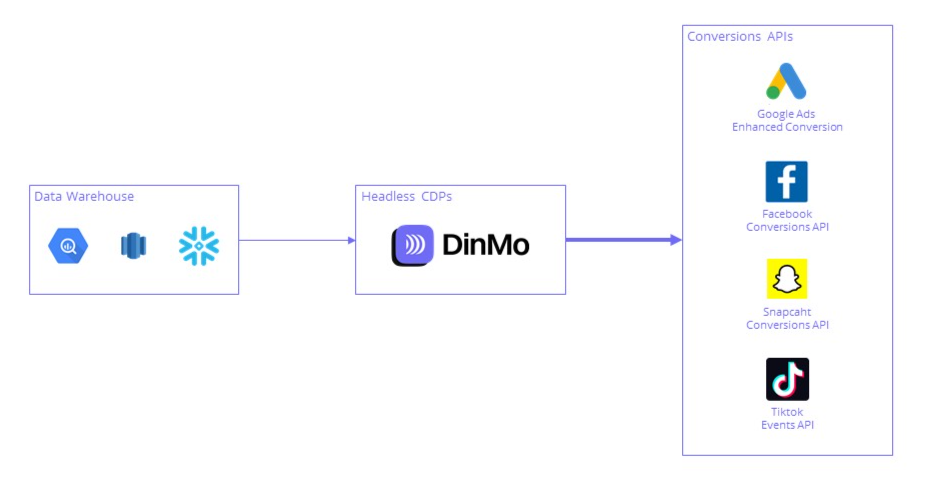
Unfortunately, these solutions can take a long time to implement and require technical teams if you decide to do it yourself.
As event tracking is distributed across multiple point-to-point solutions, it appears essential to consolidate all your conversion data in a single source of truth, your data warehouse. Then, if your conversion events are already available in a single source, tools like DinMo can considerably reduce the level of effort to send conversions to your social platforms.
💡If you need help implementing your single source of truth, consult our guide on how to build a data warehouse.
Connecting your data warehouse to your media platforms through Composable CDPs like DinMo is then less time-consuming, taking a few clicks to implement. All you must do is provide access to the appropriate tables in your data warehouse, build valuable segments, and synchronize them across all your media platforms to create value everywhere.
Want some help and advice on the best way to implement these APIs? Do not hesitate to contact us to set up a free consultation with our experts.














